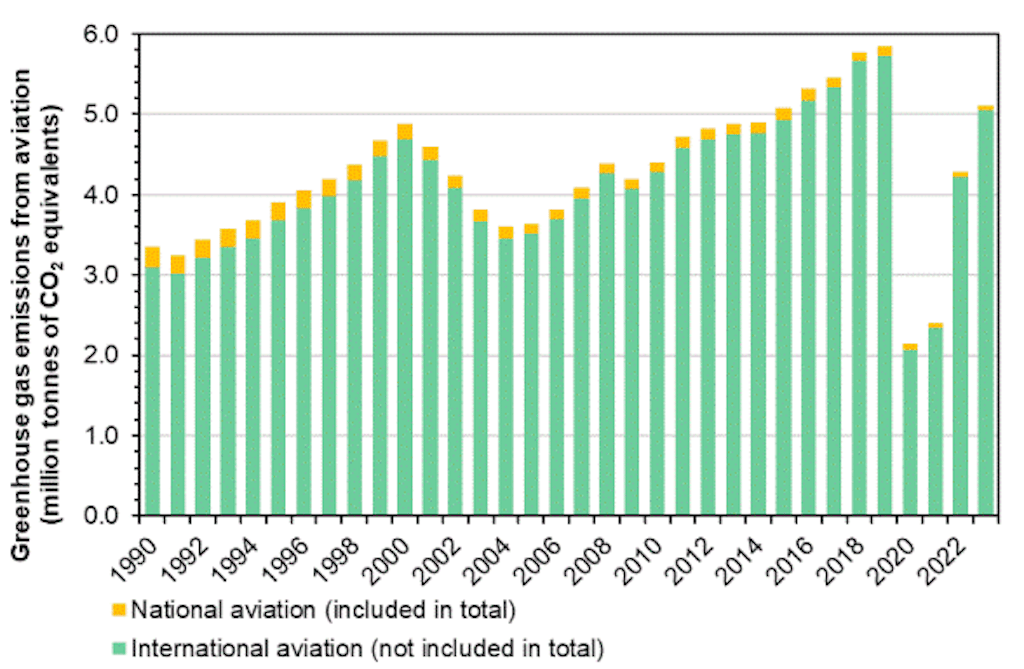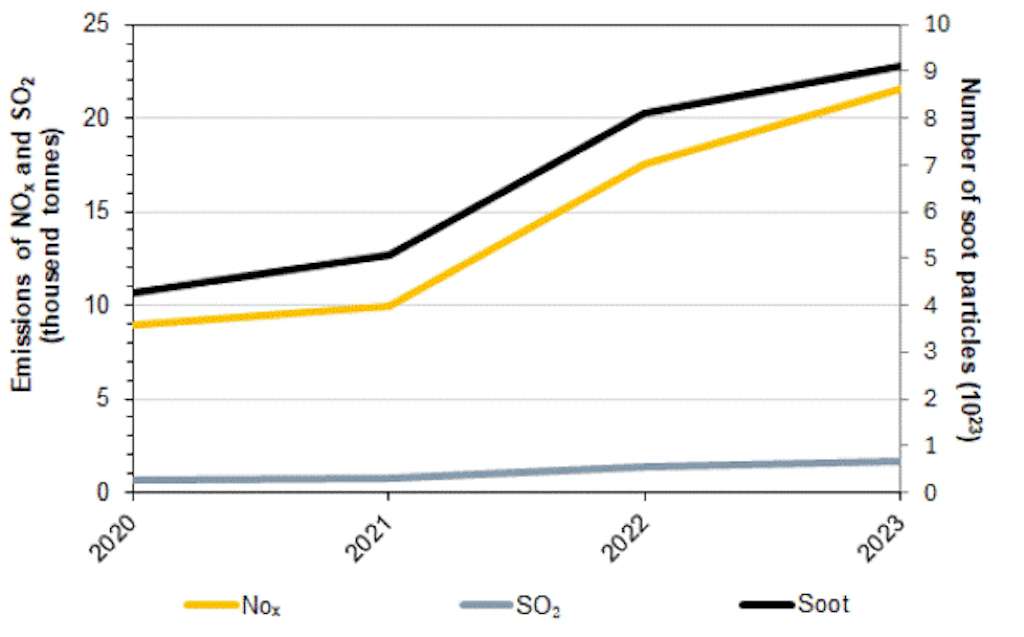Greenhouse gas emissions from aviation
The greenhouse gas inventory has separate data for emissions from national and international aviation. Although most emissions come from international flights, the national total only includes emissions from national flights. Non-CO2 emissions increase the climate impact of aviation.
In accordance with the guidelines of the UN Framework Convention on Climate Change, the national total does not take into account greenhouse gas emissions from international aviation. The national total and thus also the transport sector only include emissions from national flights, but not from international flights.
- Total greenhouse gas emissions in Switzerland (excluding international aviation and navigation and excluding the greenhouse gas balance of land use): 40.85 million tonnes CO2 equivalents (2023);
- Of which emissions from national flights: 0.07 million tonnes CO2 equivalents (2023);
- Additional greenhouse gas emissions from international flights (not included in the total and in the Transport sector, as not relevant for Switzerland's reduction targets): 5.05 million tonnes CO2 equivalents (2023).
Overall climate impact of aviation
According to the current state of knowledge, CO2 emissions from aviation have the greatest long-term effect on the climate. In addition to greenhouse gases, emissions from aviation contain pollutants that have a warming or cooling effect on the climate, such as nitrogen oxides (NOx), sulphur dioxide (SO2) and ultrafine soot. The development in these non-CO2 emissions over time is shown in the graph below.
CO2 emissions from aviation and their climate impact can be calculated directly from fuel consumption. This is not the case with the climate impact of non-CO2 emissions, which is influenced by the quantity of emissions (and thus also on flight movements) as well as a range of other factors such as the aircraft fleet (technology), flight operations (e.g. flight altitude and speed), ambient conditions (temperature, relative humidity, background concentration of pollutants) and the observation period (hours, days, years). As a result, the task of calculating the climate impact of non-CO2 emissions from aviation is extremely complex and fraught with great uncertainty. A comprehensive compilation of current knowledge and gaps in this knowledge can be found in the following publication:
- Lee et al. (2023)
Uncertainties in mitigating aviation non-CO2 emissions for climate and air quality using hydrocarbon fuels (Environ. Sci.: Atmos., 2023,3, 1693-1740)
The IPCC's Sixth Assessment Report states that today’s total climate impact of global aviation is approximately three times that of the CO2 emissions generated by the combustion of aviation fuels (IPCC AR6 WGI, Chapter 6). Because of the uncertainties and because some processes have not yet been quantified, an in-depth analysis is necessary in order to draw up measures to reduce the climate impact of non-CO2 emissions in aviation; individual measures could have only a limited or even detrimental effect. Moreover, the climate impact of non-CO2 emissions from aviation lasts a relatively short amount of time compared to that of CO2 emissions, which lasts for thousands of years. This is why reducing CO2 emissions from fossil fuels remains top priority.
Greenhouse gas emissions from buildings
Greenhouse gas emissions from transport
Greenhouse gas emissions from industry
Greenhouse gas emissions from agriculture
Greenhouse gas emissions for the Waste sector
Emissions of synthetic gases
Greenhouse gas balance of land use




